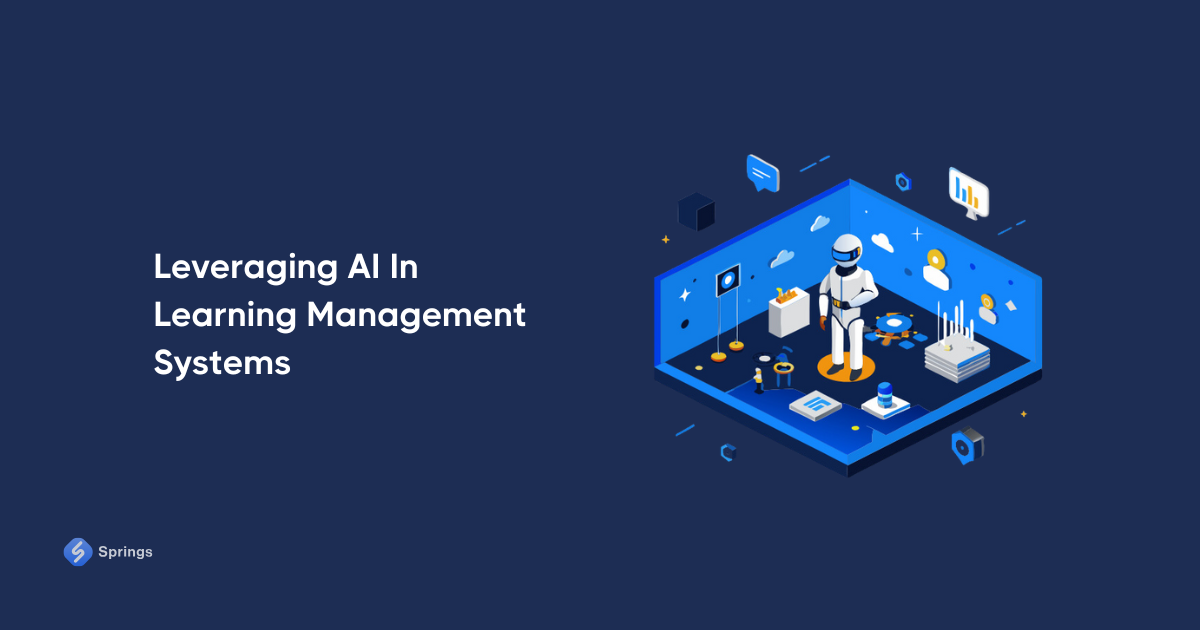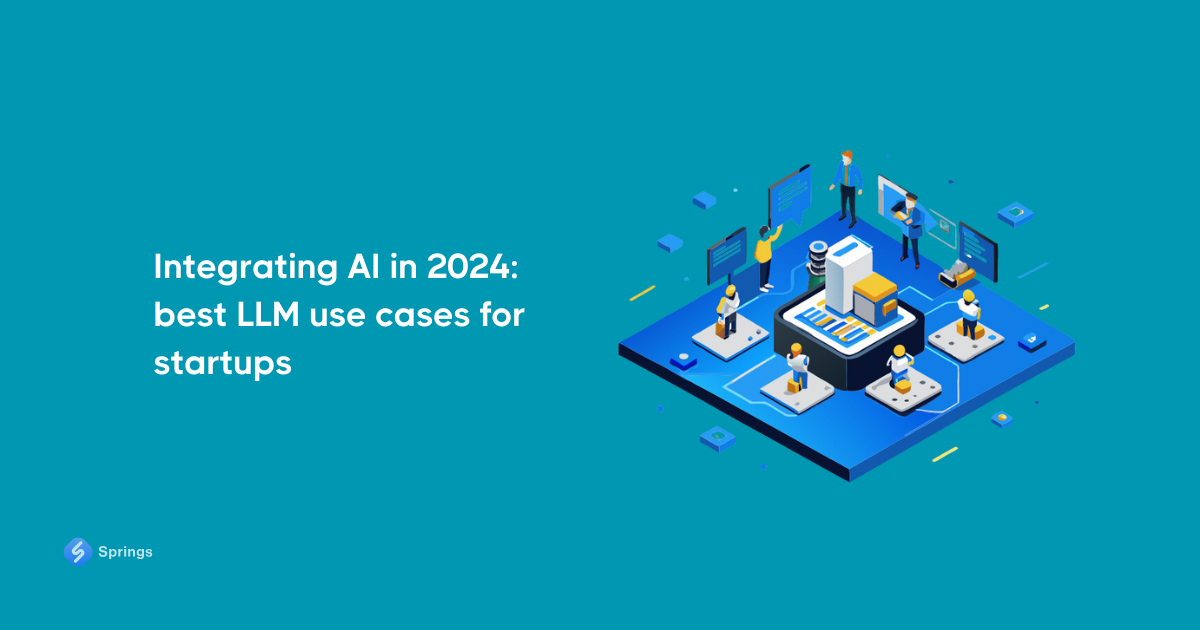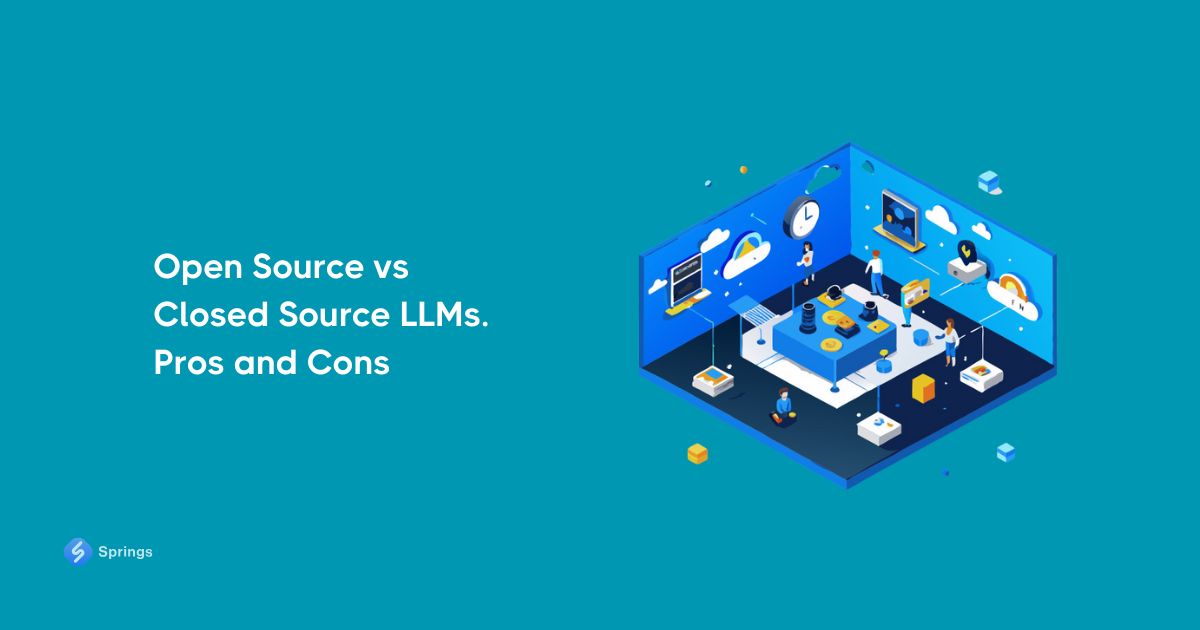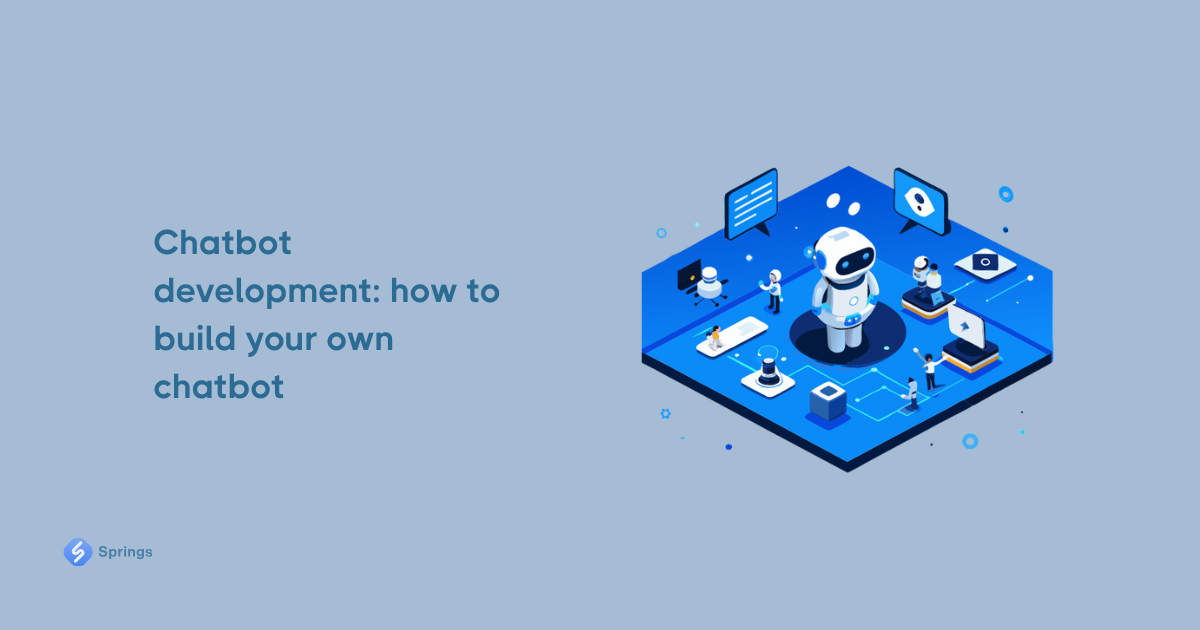Everything you need to know about multi AI agents in 2024: explanation, examples and challenges
Intro
Step by step, our society is moving into the era of human-like systems that can replace some people’s functions and make it 10 times faster showing even better results. If a couple of years ago we talked about some new AI chatbots that can answer questions for customer support purposes, today - we discuss agents for artificial intelligence, their huge possibilities, features, structures, etc.
According to Forester, AI startups received $12.2 billion in funding across over 1,100 deals only during Q1 2024, reflecting continued investor confidence in AI's transformative potential. Additionally, as businesses use more AI agents, 39% of companies predict an increase in workforce size due to new roles supporting AI initiatives, while 51% of employees anticipate AI will positively impact their jobs within five years.
These numbers are impressive but what is even more impressive is that AI agents can combine into multiple systems - called multi agent or multi AI agent. In this article, we will describe the basics of multi agent systems in artificial intelligence, their capabilities, examples and the ways to build agents and multi agent systems.
Are you ready? Let’s move on.
Multi AI Agents And Multiagent Systems - What Are They?
Multi AI Agents are systems that are based on many agents connected to similar or different Large Language Models. In contrast to regular single-agent models, multi agent systems in artificial intelligence allow these autonomous agents to handle complex, multifaceted tasks more effectively, by sharing responsibilities and coordinating with each other. This multi agent architecture offers a unique advantage for applications that require adaptability and precision, showcasing the capabilities of multi agent artificial intelligence.
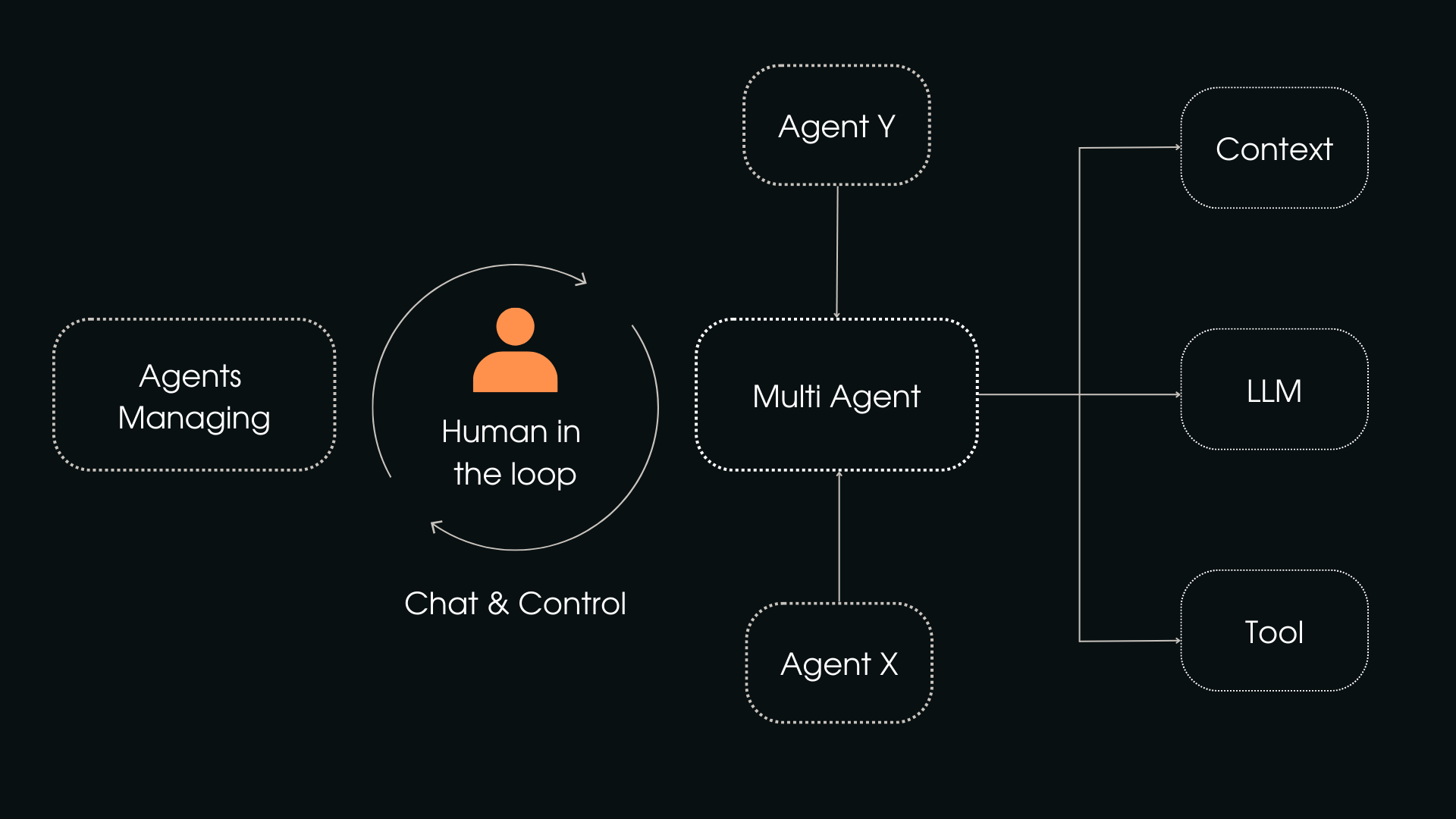
As we may see from the schema above, the core components of the multi AI agent are:
- Agents - agents are built with distinct roles, personas, and specific contexts in mind, allowing them to operate within a multi agent system. Each agent uses LLM for processing, enabling it to perform specialized tasks with precision.
- Agents Managing - it outlines how these agents collaborate, whether through sequential, hierarchical, or bi-directional communication patterns. This coordination is key for multi agent optimization, allowing agents to respond dynamically to task requirements.
- Human in the loop - having a human in the loop is essential to support decision-making and assess results. This human oversight complements the autonomous capabilities of agents, providing the reliability of the multi agent system.
- Tool - agents are equipped with various tools for specific tasks, such as searching the web for information, reading or generating documents, or uploading code to repositories. These tools amplify the versatility of multi agent artificial intelligence, enabling it to handle complex tasks.
- LLM - each agent’s actions are supported by language model, which provide the inference required to interpret and generate responses. This LLM backbone is fundamental to the functionality of the multi agent system, guiding each agent’s contributions to the collective process.
- Context - the context is a set of information that is defined by a prompt so it may recognize intent and react. These prompts are used by AI algorithms integrated into the agents to act specially.
The core structure of multi agent systems in artificial intelligence enables each agent to operate either independently or as part of a coordinated group, depending on the needs of the task. Despite their autonomy, these agents benefit from human oversight, especially when decisions require review or adjustment in sensitive scenarios. This framework of multi agent vs single agent operation allows flexibility, where agents can switch between collaboration and independent action, creating a multiagent system that is versatile for multiple industries.
In practice, agents within a multi agent system use various tools to complete their assignments, such as performing online searches or processing complex documents. With multi agent LLM capabilities, these systems bring together autonomous agents to tackle diverse challenges, transforming approaches to problem-solving across industries by using the strengths of multi agent and single agent models together.
Does this seem a bit too complex for you? Feel free to contact us and our AI experts will provide a consultation for you on how multi-agents work and their way to benefit your business.
How Multi-Agent LLMs Work
Multi agent LLMs are developed to function as a collaborative network of both open-source and closed-source language models, where each agent is assigned a specialized task that it can perform with expertise. The research interest in LLM-based multi-agent systems is rapidly growing, especially for problem-solving and world simulation applications.
Please look at this LLM tree prepared by multiple universities working with multi-agents. To track progress, the AI scientists categorized recent work into various types and tallied the number of publications in each category at three-month intervals. Each leaf node displays the count of papers within its specific category.
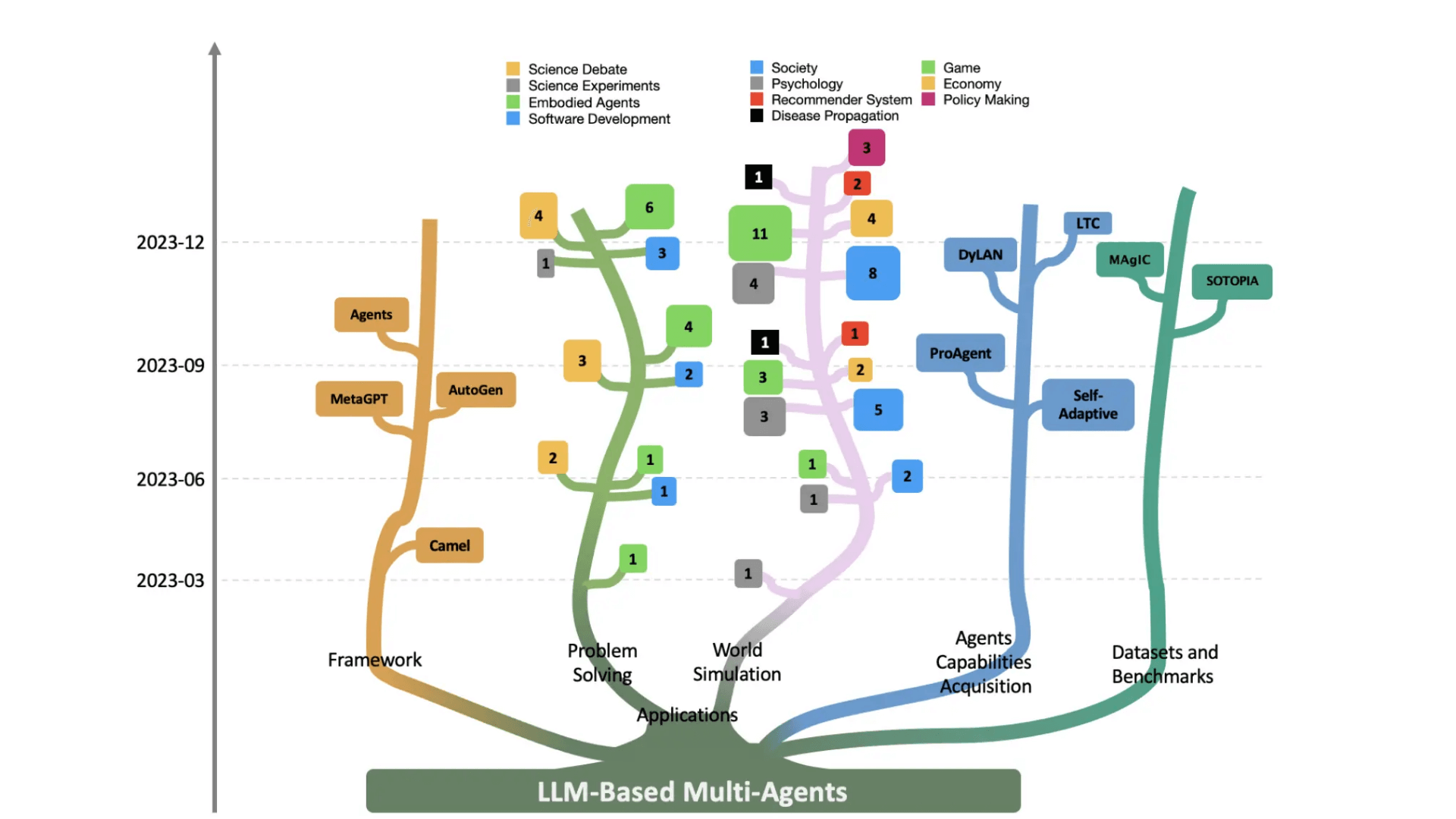
In a multi agent LLM system, the typical workflow starts when a user provides a high-level task or query. The multi agent system then decomposes this task into smaller, manageable subtasks, which are assigned to different specialized agents within the multi agent architecture. Each agent, equipped with unique capabilities, tackles its designated subtask using its LLM to reason, plan, and take action.
These agents work within autonomous agents and multi agent systems, interacting as necessary to share information and complete subtasks that rely on collaboration. This structure highlights the difference between multi agent vs single agent approaches, showcasing the benefits of cooperative problem-solving in multi agent systems in artificial intelligence. The system coordinates multi agent optimization and appropriate connection with LLM API.
The general workflow on multi-agent LLMs may look like this:

Once all agents have completed their tasks, the outputs are collected and combined into a cohesive final result. This seamless assembly within the multiagent system allows for complex, multi-layered tasks to be handled efficiently. Such processes illustrate the power and adaptability of multi agent LLMs, which harnesses the strengths of individual agents to address challenges that require a collaborative and scalable approach.
Multi AI Agents vs Single AI Agents
Multi agent systems in artificial intelligence are particularly effective for complex tasks due to their collaborative nature. Unlike single-agent models, which operate independently, autonomous agents and multi agent systems coordinate their strengths to tackle different challenges. This cooperation helps mitigate common problems such as hallucinations in LLMs, where single-agent models might generate convincing but false information. By having agents cross-check each other's outputs, these systems reduce inaccuracies, making them reliable for critical areas like pharmacy & healthcare or legal & compliance.
A significant advantage of a multi agent architecture is its ability to manage extended contexts. While single-agent systems face limitations due to small context windows, multi-agent setups overcome this by distributing segments of long texts among agents. Each agent processes part of the information, and together they maintain a continuous understanding of the full conversation or document. This approach enables better handling of complex, ongoing interactions, where maintaining coherence is essential.
Let’s have a look at the comparison table:
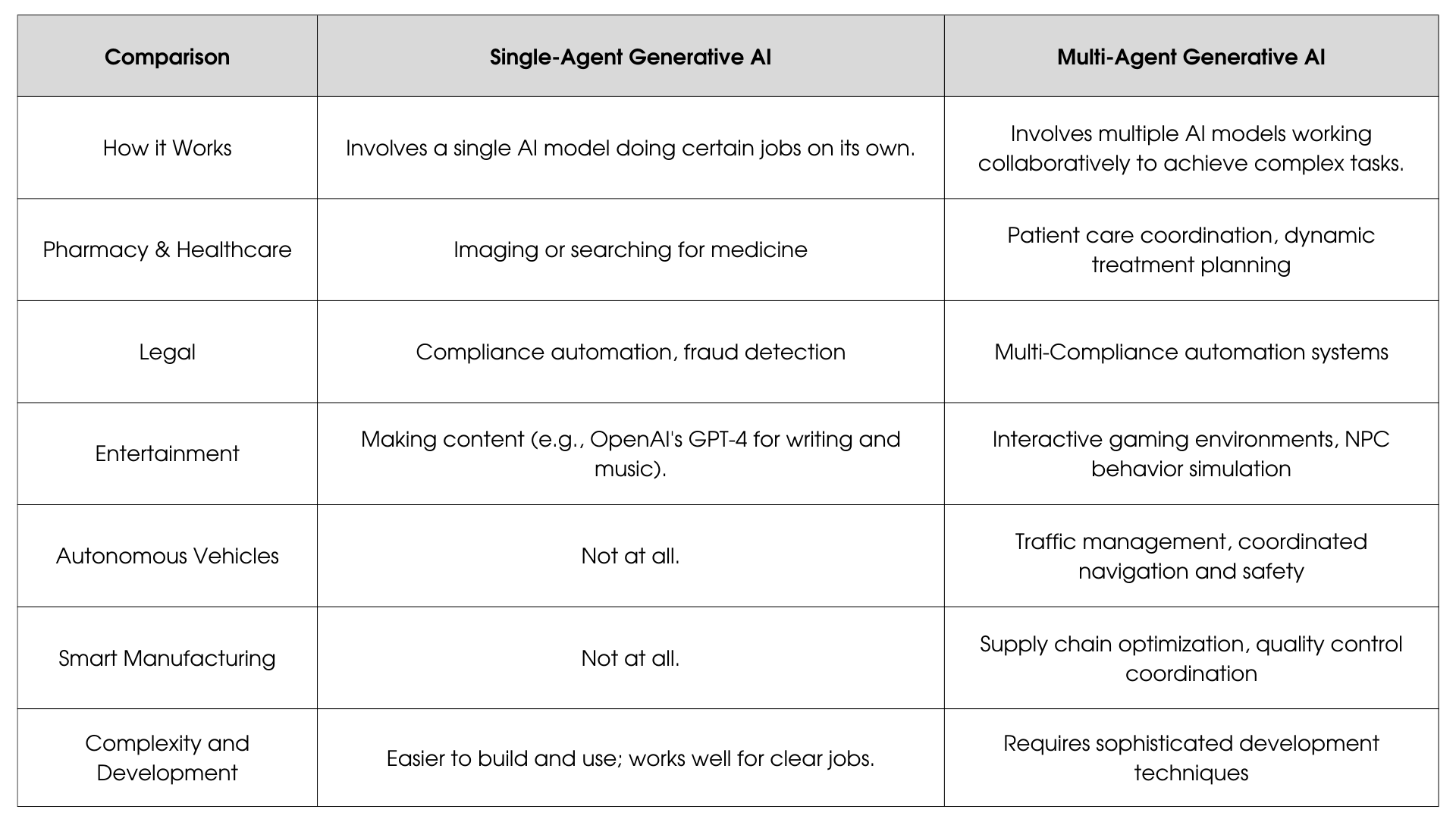
Multi agent vs single agent comparisons also reveal a notable difference in task management. Single-agent models work on a single thread, limiting them to one task at a time, which can slow down responses in environments that require quick multitasking. Multi agent systems, however, operate in parallel, allowing various agents to address different tasks simultaneously.
Collaboration within multi agent systems in artificial intelligence opens capabilities by bringing together diverse skill sets. Where single-agent setups might struggle with complex scenarios, multi-agent frameworks combine the strengths of specialized agents to form well-rounded solutions.
The structure of a multi agent system is designed for agents to communicate and work toward shared objectives. Each agent is equipped with unique methods for solving problems and can interact with others within the system. This multi agent architecture facilitates dynamic, cooperative decision-making, allowing for more comprehensive handling of complex and ever-changing tasks.
Examples of Multi AI Agents
There are many ways we may use multi AI agens for business today as there is a huge field for automation of workflows. Education, Finance, Legal, Data Analysis, Healthcare, HR, Automotive, Travel, and Logistics: all these and many more industries need AI automation today.
Let’s have a look at the most popular examples of their usage:
- Healthcare multi-agents are used for patient care coordination, medicine data processing, searching for the needed medical info, and treatment planning. Moreover, they support collaborative medical diagnosis.
- Finance Multi-Agent Systems are used in decentralized finance (DeFi) for market analysis. They can also assist with fraud detection through transaction monitoring.
- Legal and Compliance multiagents are used to process complex data (huge amounts of documents), check it for the latest law updates, detect legal fraud, and perform compliance regulatory checks.
- Manufacturing and Logistics systems Improve supply chain coordinationand power smart factories for tasks like assembly and inventory management.
- Educational Multi-Agent Systems can create custom learning plans and adapt content delivery to meet the unique needs of each student. Moreover, multi agent LLMs serve as autonomous AI tutors to guide students through courses, answer questions, and provide additional resources.
- Data Analysis Multi Agents boost data preprocessing tasks, ensuring that different agents handle aspects like validation, transformation, and integration. Autonomous agents and multi agent systems can identify trends and extract insights from large datasets, supporting businesses in strategic planning.
Now, let’s have a look at the exact examples of Multi Agent Platforms:
IONI
IONI - is Springs’ Multi Agent Platform that is developed to bring together a range of AI agents to address complex challenges in various industries. In compliance and legal sectors, IONI facilitates tasks such as regulatory checks, documentation review, and identifying compliance gaps by using its multi agent system. This approach aids organizations in navigating complex legal frameworks, reducing manual workload, and improving outcomes with comprehensive agent collaboration.
In the education domain, IONI supports personalized learning paths and content generation. By employing autonomous agents and multi agent systems, the platform adapts to different educational contexts and learner needs. Whether assisting with curriculum planning, automated assessment, or interactive AI tutoring.
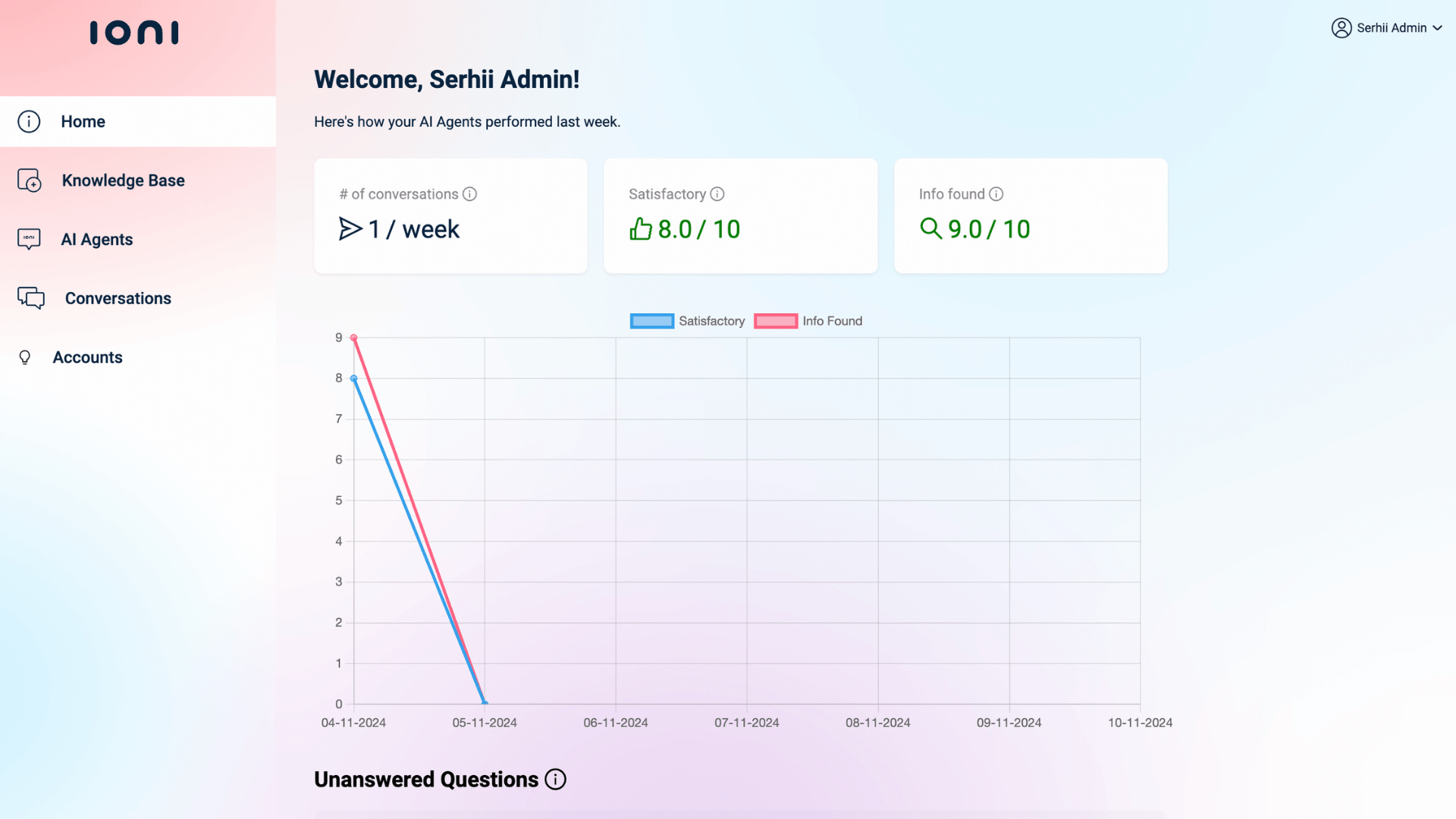
In the fields of healthcare and pharmacy, IONI's capabilities extend to tasks like patient data management, predictive analysis, and process automation. This multi-agent system coordinates various AI agents that work together to analyze medical data and boost operations.
NUMERAI
NUMERAI is the platform that allows data scientists worldwide to submit models that predict financial market trends. These agents interact within a collaborative framework, contributing to the overall performance and accuracy of Numerai's predictive system. The use of multi agent optimization ensures that different models complement one another, enhancing the reliability of the market predictions. This unique approach to using autonomous agents and multi-agent systems sets Numerai apart from traditional hedge funds, creating a dynamic ecosystem of collaborative AI.
Numerai's multi-agent architecture supports complex task management and decision-making processes by integrating models with different strategies and viewpoints. The system's design embraces the idea of multi-agent vs. single-agent setups, opting for a network capable of managing the intricacies of financial data through collaborative intelligence. This innovative use of a multiagent system demonstrates how AI agents can optimize complex finance problems.
RELEVANCE AI
Relevance AI is an Australian-based company that specializes in offering machine learning and artificial intelligence tools created to boost data analysis and management. The platform enables businesses to gain deeper insights from their data by applying innovative machine learning models that can handle unstructured data such as text and images. Relevance AI provides capabilities for natural language processing (NLP), data clustering, and visualization, helping organizations make sense of complex datasets without the need for extensive in-house AI expertise.
This multi agent system focuses on making data exploration more accessible and intuitive through user-friendly interfaces and automation. By facilitating the transformation of raw data into actionable insights, Relevance AI supports various industries such as customer service, marketing, and finance. Their platform includes features like embedding and vector search, which are essential for analyzing high-dimensional data and improving the search and recommendation capabilities of businesses.
Overall, there are not so many Multi AI Agent Builders we may meet today. Let’s have a look at their risks and challenges.
Risks and Challenges of Multiagent Systems
As any other AI development technologies multi-agent systems come with some troubles that need careful consideration during their integration.
Agent Malfunctions. Since multi agent systems in artificial intelligence often rely on shared models, let’s say different LLMs, weaknesses or errors can propagate across the entire system, impacting all agents involved. This can lead to widespread failures or even make the system vulnerable to external attacks. Addressing these challenges requires stringent data governance, as well as thorough training and testing processes for the foundation models to mitigate such risks.
Coordination Complexity is another important challenge in autonomous agents and multi agent systems. Developing a system where agents can effectively coordinate and negotiate with each other is fundamental to creating a cohesive multi agent architecture. Without proper code architecture and system prompts, the app’s functionality can break down, affecting its ability to handle tasks that require additional effort. Managing coordination is particularly complex in environments where agents must operate both independently and collaboratively, or in while connecting to such 3rd party services, as Realtime API.
Unpredictable Behavior is also a common issue in multi agent systems. When agents act independently in decentralized networks, their behavior can sometimes conflict or become difficult to anticipate. This can create scenarios where it is challenging to detect and rectify issues within the broader multiagent system. Ensuring that mechanisms are in place for monitoring, intervention, and conflict resolution is essential for maintaining stability and effectiveness in the system.
Intricate development and deployment challenges. The creation of effective multi agent architecture requires advanced planning and a deep understanding of agent interaction patterns to avoid code failures. This involves anticipating potential risks and building agents that can adapt and communicate effectively within the system. Such complexities highlight the importance of developing multi-agent solutions that are resilient, well-monitored, and capable of managing the diverse challenges that arise from multi-agent operations.
Overall, multi-agents AI systems can be considered as really complex technology solutions that need proper preparation and strong teams to implement them and avoid tons of troubles in the future. Springs has already implemented multi-agent solutions and I will show you the core steps of this process.
How to Build Multi AI Agent System with Springs
If we talk about the development of any kind of software - we always divide the process into main compulsory stages:
- Discovery Phase
- MVP Development
- QA Testing
- Deployment
- Continuous Development
Discovery Phase
The discovery phase in developing an AI multi-agent system is essential for laying a strong foundation before any implementation begins. This phase involves deep research and analysis to fully understand the objectives, scope, and challenges of the project.
By providing a discovery phase, our team identifies the right type of multi agent systems suitable for their needs, ensuring that the architecture is aligned with the expected outcomes. This step also includes understanding the specific context in which the system will operate, addressing potential constraints, and formulating strategies to navigate them.
Moreover, at this stage it is important to describe overall multiagent architecture. Take a look the sample below:

Finally, key components of the discovery phase include stakeholder interviews, data collection, and feasibility studies. These activities help to map out how different agents will interact and cooperate within the multi agent system. Our team also evaluates technical requirements and determines if specialized agents are better suited to achieving the goals of the project.
The discovery phase further emphasizes risk assessment and coordination planning. Multi agent systems in artificial intelligence often come with challenges like unpredictable agent behavior or communication breakdowns. Addressing these during the initial planning phase helps build strategies for agent synchronization and negotiation capabilities.
MVP Development
Developing an MVP (Minimum Viable Product) for an AI multi-agent system is a focused approach that prioritizes delivering a functional version of the project while limiting scope to essential features. This phase is about creating an initial version that demonstrates the core capabilities of the multi agent architecture and validates its effectiveness in solving specific problems.
MVP development requires careful planning to outline each agent's specific tasks. Key considerations involve choosing agents that can perform critical operations individually and collaboratively. Ensuring that agents can communicate, share information, and coordinate efficiently is essential to building a powerful multiagent system. AI developers need to establish a stable foundation where agents can successfully execute their roles while minimizing bottlenecks.
This stage provides important insights into how agents behave under various conditions and interact within the multi agent architecture. Challenges such as synchronization issues or unexpected agent behavior are evaluated and addressed to improve the system’s overall performance. By iterating on feedback, teams can boost their approach, moving from an MVP to MMP or Production-ready product.
QA Testing
Quality assurance (QA) for multi-agent system testing is a tiny process that requires a unique approach compared to general agents. Multi-agent systems in artificial intelligence involve complex interactions among AI agents, making it crucial to perform auto-tests that evaluate individual performance and the coordination, communication, and behavior of the entire system.
QA team needs to simulate real scenarios where multi-agent architecture is stressed under various conditions to identify vulnerabilities, potential failures, and unpredictable agent behaviors. Usually, Smoke and Regression tests are used too.
During multi-agent QA testing, a thorough analysis is made to ensure that each agent within the system adheres to expected outputs while interacting cohesively. This involves checking for issues like agent malfunctions, coordination failures, or hallucinations.
QA processes help to make sure that the architecture is robust, scalable, and capable of performing its functions reliably. The main goal of multi-agent testing is to provide comprehensive feedback that supports iterative improvements, paving the way for a stable and functioning system.
Deployment and Continuous development
Deploying a multi-agent application requires careful agent orchestration to transition the solution from testing into live environment. This phase focuses on establishing the necessary infrastructure, protocols, and support mechanisms that allow autonomous agents and multi-agent systems to operate as intended in production settings.
The deployment of AI multi-agent apps involves the integration of a multi agent architecture that ensures agents communicate effectively, maintain stable performance, and adapt to live data and user interactions. Continuous monitoring is essential during this stage to detect and respond to issues that may arise from the complexity of agent coordination and environmental variables.
Continuous development (CD) complements deployment by maintaining and evolving the system post-launch. This involves iterative updates based on performance metrics, user feedback, and changes in operational requirements, which help in adding new features on an ongoing basis:
Conclusion
I won’t stop saying that AI technologies will continue to surprise us. With the release of OpenAI’s Advanced Voice Mode and Realtime API, we are moving to a new era of “comfortable” AI Agents and complex systems.
AI Agents have already been able to automate tons of business processes: scheduling, teaching, coaching, sales & marketing tasks processing, image recognition, custom support delivery, and many many other things. The new capabilities of multiagent applications allow business owners to reduce multiple costs on hiring new staff and investing in AI products instead.
AI Teachers, AI Employees, AI Researchers - all these technologies make businesses more profitable and return investments within a short period of time due to the rapid growth of the AI industry and the possibility to improve your product day by day.

